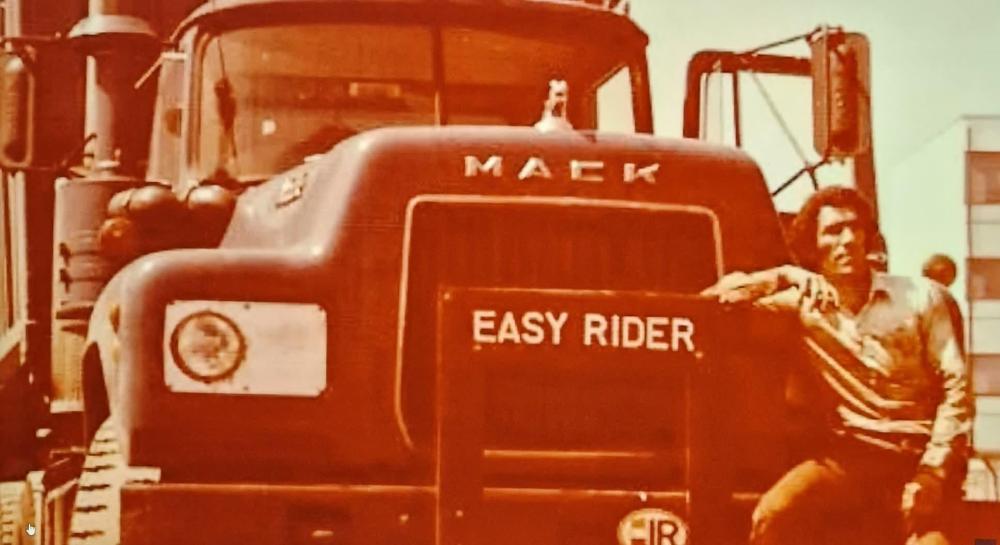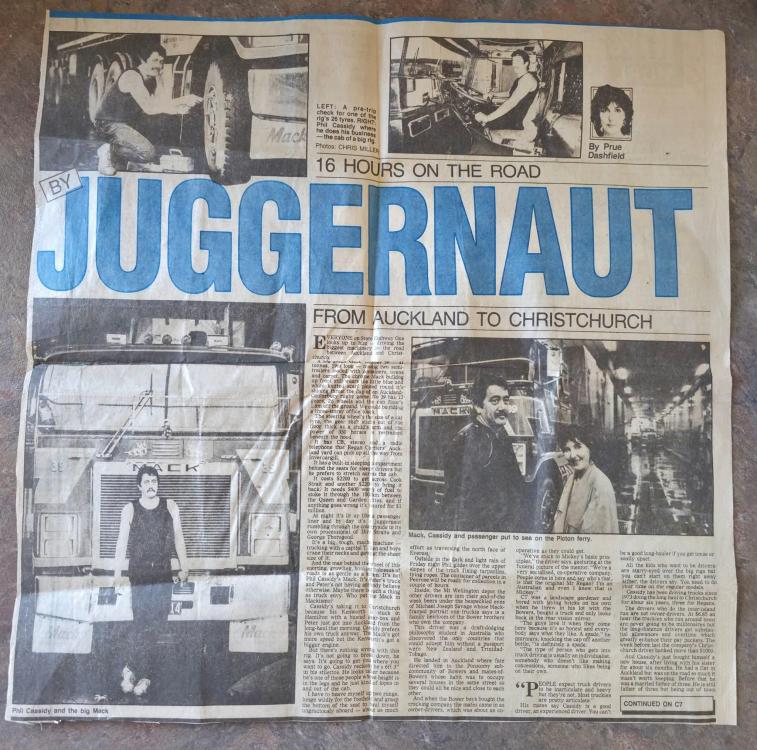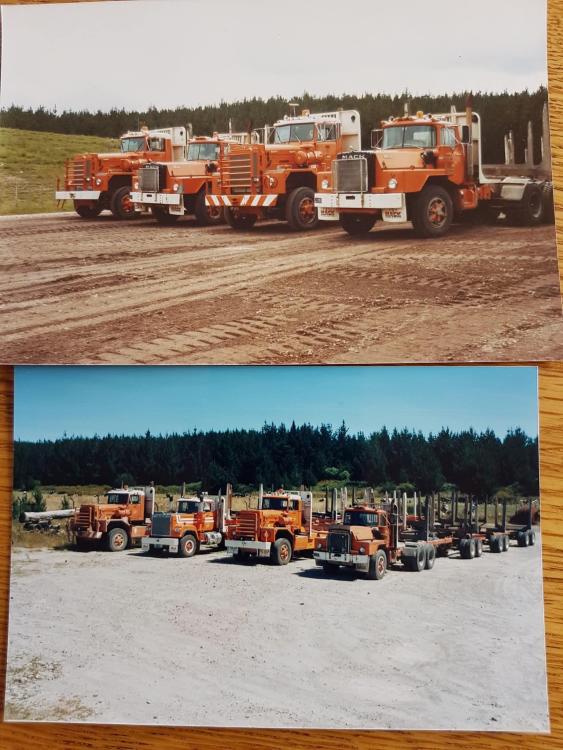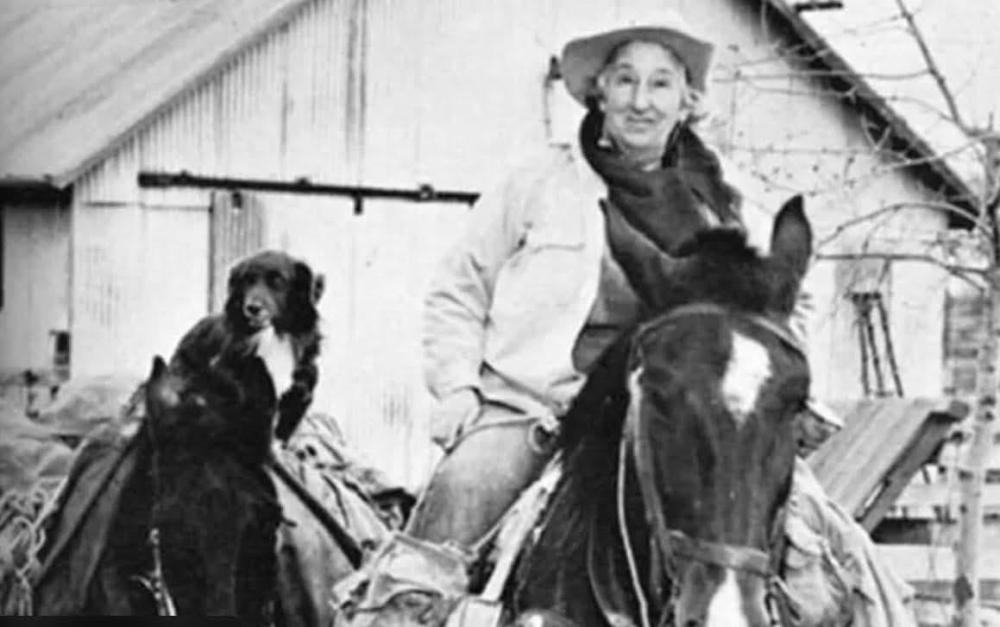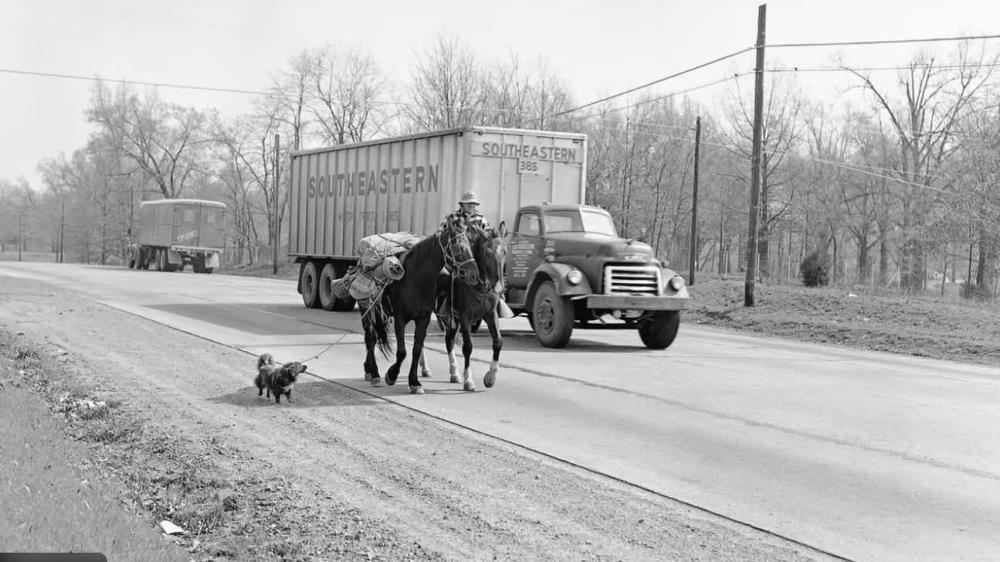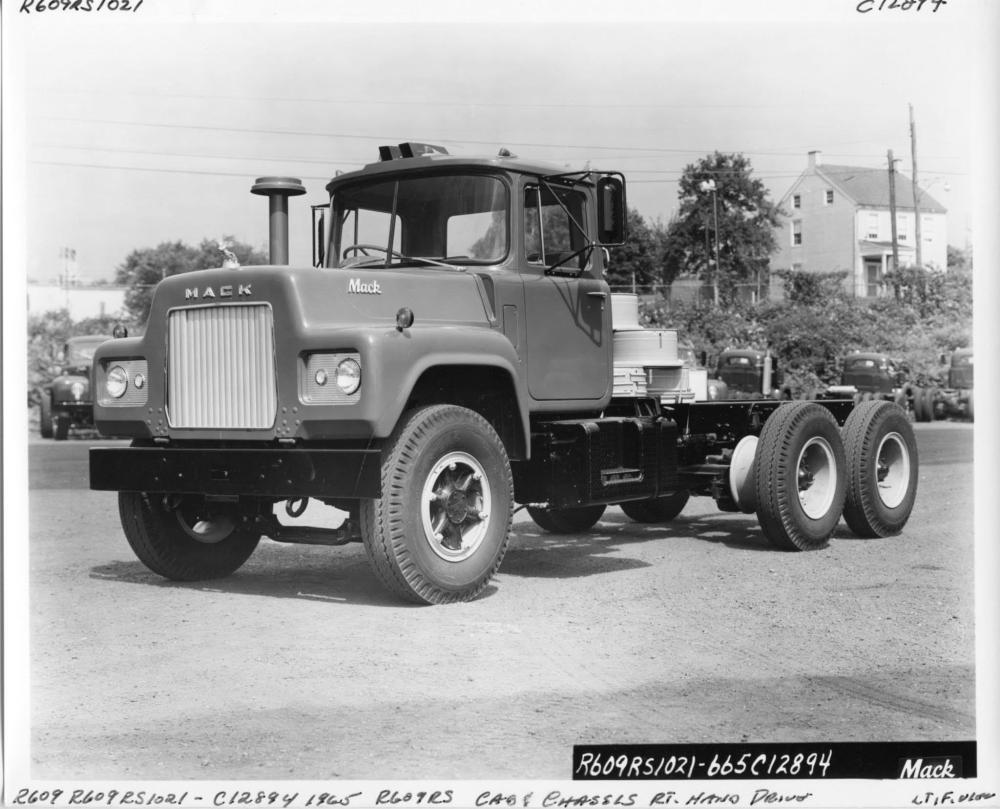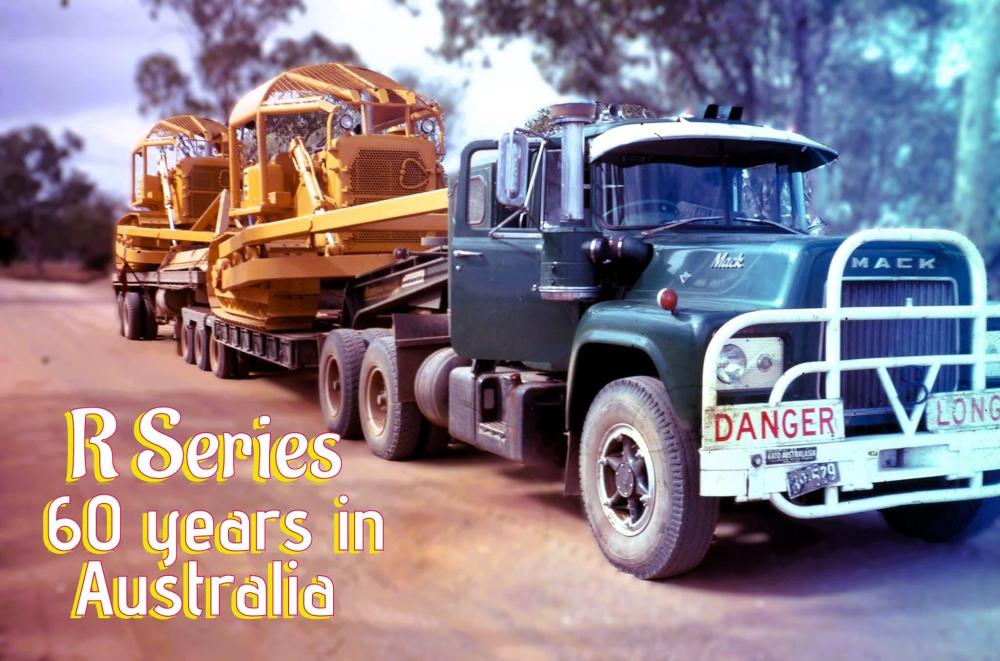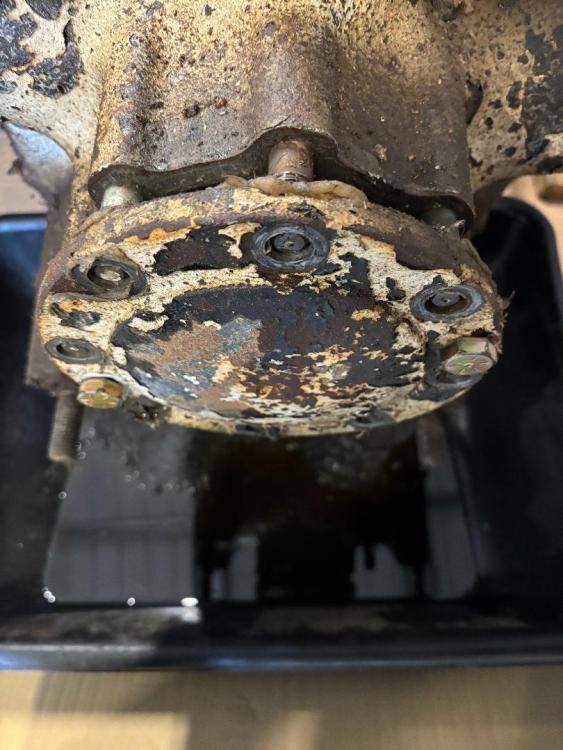-
Posts
6,712 -
Joined
-
Last visited
-
Days Won
83
Content Type
Profiles
Forums
Gallery
Events
Blogs
BMT Wiki
Collections
Store
Everything posted by mrsmackpaul
-
You can buy 20 thou over sleeves in Australia off the shelf So I reckon it won't be a drama in the U.S. as ours probably come from the same supplier If the link works in Yanky land you'll see STD, 6, 12 and 20 thou sleeves Cylinder Sleeve For Mack Engine E-6 2VH/4VH - MaxiTrucks https://share.google/H24bIClcGFfCC1rKZ Paul
-

B-73 Restoration
mrsmackpaul replied to mattb73lt's topic in Antique and Classic Mack Trucks General Discussion
I have gone through a few speedos and tachos, all genuine Mack, some last 20,000 kms some last and last I found the cable length had big result in how long they last A longer cable with not as sharp turns seems to last forever Well done on the 4000 miles Paul -

Cruiseliner Transformation
mrsmackpaul replied to cruiseliner64's topic in Antique and Classic Mack Trucks General Discussion
Looking good, it will look different once the clear coat goes on Paul -
I reckon it's cheap insurance on a good motor I got the R model done, it was crazy expensive, I think all Australian Macks of that era came with the biggest radiator you could get I can't remember the exact price, but it was over $5000 Australian Back then, with the exchange rate it was about $3600 US You probably felt the earth tremor when my jaw hit the ground But compared to the cost of a motor it is cheap Paul
-
Copied from Mack Muster Facelessbook page 🚛 This Week’s Fact, Countdown to the Mack Muster, 21–22 March 2026! As we gear up for the Mack Muster next March, here’s a look back at a key moment in Aussie Mack history. The very first two Australian R series field-evaluation units, the lighter-specced R403RS and the more premium R609RS, rolled out sharing the same fresh appearance, brand-new chassis and a noticeably larger cab. But their stand-out feature was something truly ahead of its time: a revolutionary one-piece fibreglass tilt bonnet. This new fibreglass design made engine access far easier than ever before. However, many long-time Mack customers were still big fans of the proven heavy-duty steel-sheeted bonnet and fender setup, similar to the B series. With such strong feedback from operators, MTA engineers soon introduced a steel-bonnet option for the R series. This rugged, tough-looking version quickly earned the nickname “Flintstone” thanks to its (stone age) strong appearance. More history, more trucks, and more stories just like this will be on show at the Mack Muster, 21–22 March 2026. Don’t miss it! 🚚💨
-

Aussie R 800
mrsmackpaul replied to mrsmackpaul's topic in Antique and Classic Mack Trucks General Discussion
-

Cruiseliner Transformation
mrsmackpaul replied to cruiseliner64's topic in Antique and Classic Mack Trucks General Discussion
Good job It's summer here in a week or so, still cold days amd showers Very unusual weather for here for this time of year, normally stinking hot and dry as chips Glad you got a break in the weather Paul -

R-model cab resto report
mrsmackpaul replied to Vladislav's topic in Exterior, Cab, Accessories and Detailing
Yes Vlad, life gets kinda busy for all of us But at least never wake up in the morning with nothing to do for the day Just keep poking along, thats what I do Thanks for the update Paul -

Another Day of Bootleggin Moo Dawg Juice
mrsmackpaul replied to The Rubber Duck 006's topic in Odds and Ends
Milk tanker drivers in Australia always self load, I have no idea who else would load Dairy farmer put the milk in the vat, our work is done The very best years of my life was dairy farming, I really loved that and still miss it today Paul -
There was LHD allowed in some states in Australia and only under some conditions in some states and some states not really at all People with WW2 type of gear had tp pretty much convert them to RHD in most states I think most things got converted to RHD as a matter of course and others that didn't had sign written in big ugly writting "CAUTION LEFT HAND DRIVE" Dunno if the writing made anything safer I reckon nack in the late 80's things started to change As imports of classic cars/muscle cars from the U.S. increased, so did dodgy shops converting things to RHD As I recall it, some really shoddy conversions were taking place and people were paying huge money for these conversions and I reckon it was maybe when some people died as a result of these conversions that car clubs and the likes really pushed back at the government's rules We have car club registrations in Australia that cover collectable cars trucks tractors etc Your only allowed on the road 45 days of the year and some other rules I feel the clubs argued successfully that it was much safer to have these vehicles in good original condition than have dodgy modifications So back to trucks and every day vehicles Only special types of vehicles are allowed to be LHD and on full rego and used daily, as far as I know Things like cranes and farm machinery and the like I'm sure there are lots of exceptions to these rules, but as a general guide that would be my understanding There were 2 H model's bought into the country and I feel both were converted to RHD over their working life The DM 800's were converted as well as were I feelthe R700's The F models had 2 right angle gear boxes on the dash and a PTO shaft joining them up when new in Australia Then the FR was introduced and this was a F model cab on a R model chassis The R model chassis was used om everything well into the 2000's as the chassis was well suited to RHD Enough waffle from me Paul
-

Finally some DM progress
mrsmackpaul replied to mowerman's topic in Antique and Classic Mack Trucks General Discussion
Fully blinged, looks like Mr T has been tyre fitting ha ha ha Good job Bob Paul -
Well done, loosing weight is a challenge and as I get older the challenge is even harder I have no good answers here Was running between 8 and 10 mile each morning for nearly 15 years after I had a accident and busted my back in a couple of spots Dunno if I lost weight or not but sure as I never weigh myself, but I felt better and still take zero medication Developed a heel spur type of deal a few months ago, so did something really unusual, got some new tyres and tubes for a push bike someone gave my years ago Stuff me that took a while to get used to but I am 12 - 13 mile each morning Almost always up at 3.00 am and go straight out to it Well done on the weight loss, I dunno if I could give up Bourbon, the longer I'm married the better it tastes ha ha ha Paul
-
Bugger me Geoff, it's always a sad moment when a dog '0' log passes It's bloody tough to loose them, I have never bought a dog, they just sort of end up with me, and boy, do they bring life into my life If it's a pup, I think is this maddness ever going to end, they are perfect mates for humans and humans are perfect mates for pooches Thinking of you in this tough time Paul
-
60 years strong! This week’s Mack Facts celebrate the R Series, the model that shaped Mack’s history in Australia. 1. The most popular Mack series ever built, the legendary R Series truly put Mack on the map, or more accurately, on roads all around the world! While this summary from Mack Inc. captures the global story well, it doesn’t quite reflect the unique Australian history. The last locally built R variant was the Australian-designed Metro-Liner, which rolled off the Richlands production line in December 1996, just over 31 years after the first R Series left the Rocklea facility in October 1965. 2. In Australia, Mack Trucks Inc. began local manufacturing in early 1963, producing the legendary B Models at the fledgling Rocklea, QLD operation as fast as demand could be met. But operators were soon calling for more performance, greater driver comfort, and increased hauling capacity, paving the way for the R Model, the perfect evolution and worthy successor to the B Model. The first two trucks were imported in mid-1965, an R403 and a more powerful R609. The photo shows the first R609 in Allentown in 1965, ready for shipment to Australia. 3. Almost 9,000 R Series trucks were built in Australia in an incredible range of configurations. Starting with the ever-popular R609, powered by the tough END711 engine, through to the heavy-duty R800 off-road model, the R Series proved it could handle virtually any hauling task in the harshest conditions. It’s only fitting that such an achievement is celebrated, marking 60 years of the R Series in Australia! The hero photo features the very first V8 R Series delivered locally, owned by Smiler Nilon. Paul
-

Finally some DM progress
mrsmackpaul replied to mowerman's topic in Antique and Classic Mack Trucks General Discussion
Good job -

Finally some DM progress
mrsmackpaul replied to mowerman's topic in Antique and Classic Mack Trucks General Discussion
Someone with a spare parts book might be able to look up if there is a gasket Joey your normally good on the parts book department, was there ever gaskets for the axles ? Or have I only ever owned old rubbish that's been butchered by everyone before me ? I'm curious now, I always try to put everything right when I'm working on things, but I honestly don't ever recall seeing a gasket Paul -

Finally some DM progress
mrsmackpaul replied to mowerman's topic in Antique and Classic Mack Trucks General Discussion
If we are talking the axle to the hub type of deal, I don't think they ever had a gasket They crush up pretty tight, I don't recall ever seeing a paper gasket, it would be only very thin paper if there was a gasket I have only ever seen silicone type of sealant I do prefer to use Loctite sealant, stays flexible and doesn't leak and also looks very stylish with it's purple colour Paul -

Aussie R 800
mrsmackpaul replied to mrsmackpaul's topic in Antique and Classic Mack Trucks General Discussion
Bob I reckon the New Zealand R 800 will have a 350 or 320 coolpower with its dual aircleaners from new Paul -

Finally some DM progress
mrsmackpaul replied to mowerman's topic in Antique and Classic Mack Trucks General Discussion
Enjoy the show, the truck will still be there tomorrow or the following days Paul
BigMackTrucks.com
BigMackTrucks.com is a support forum for antique, classic and modern Mack Trucks! The forum is owned and maintained by Watt's Truck Center, Inc. an independent, full service Mack dealer. The forums are not affiliated with Mack Trucks, Inc.
Our Vendors and Advertisers
Thank you for your support!



